Score breakdown
Things we like
- Smooth performance in electric mode
- Seamless hybrid operation
- Comfortable and versatile interior
- Enjoyable handling
Not so much
- Ride can be uncomfortable
- Grabby brakes
- Slower than regular Escape
- Big premium over equivalent petrol model
The 2022 Ford Escape ST-Line PHEV brings electrification at last to the Blue Oval brand in Australia, joining the Escape medium SUV line-up about a year later than originally planned.
For the foreseeable future, this plug-in hybrid will be the only Ford passenger car or SUV to feature an electric motor. Ford Australia has yet to commit to the all-electric Mustang Mach-E available overseas, confirming only all-electric versions of its Transit van.
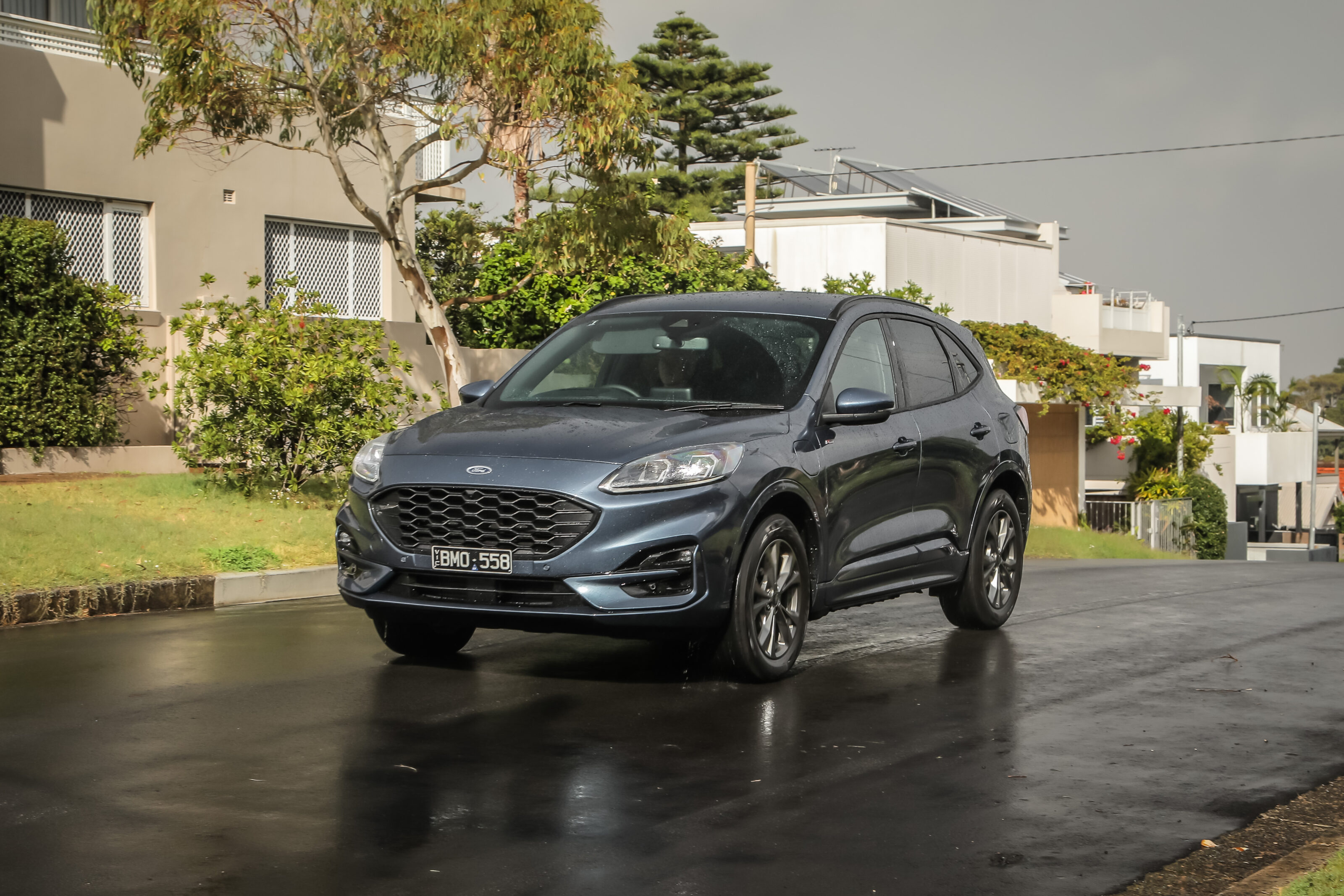
The Ford Escape PHEV shoots straight to the top of the range on price, though adopts the mid-range ST-Line trim grade rather than the top-grade Vignale.
Natural competitors are plug-in versions of the Kia Niro, MG HS, Mini Countryman, Peugeot 3008 and the forthcoming second-generation Mitsubishi Outlander.
Ford Australia has chosen not to import the regular hybrid version of the Escape that would have been a direct rival for the hugely popular petrol-electric Toyota RAV4.
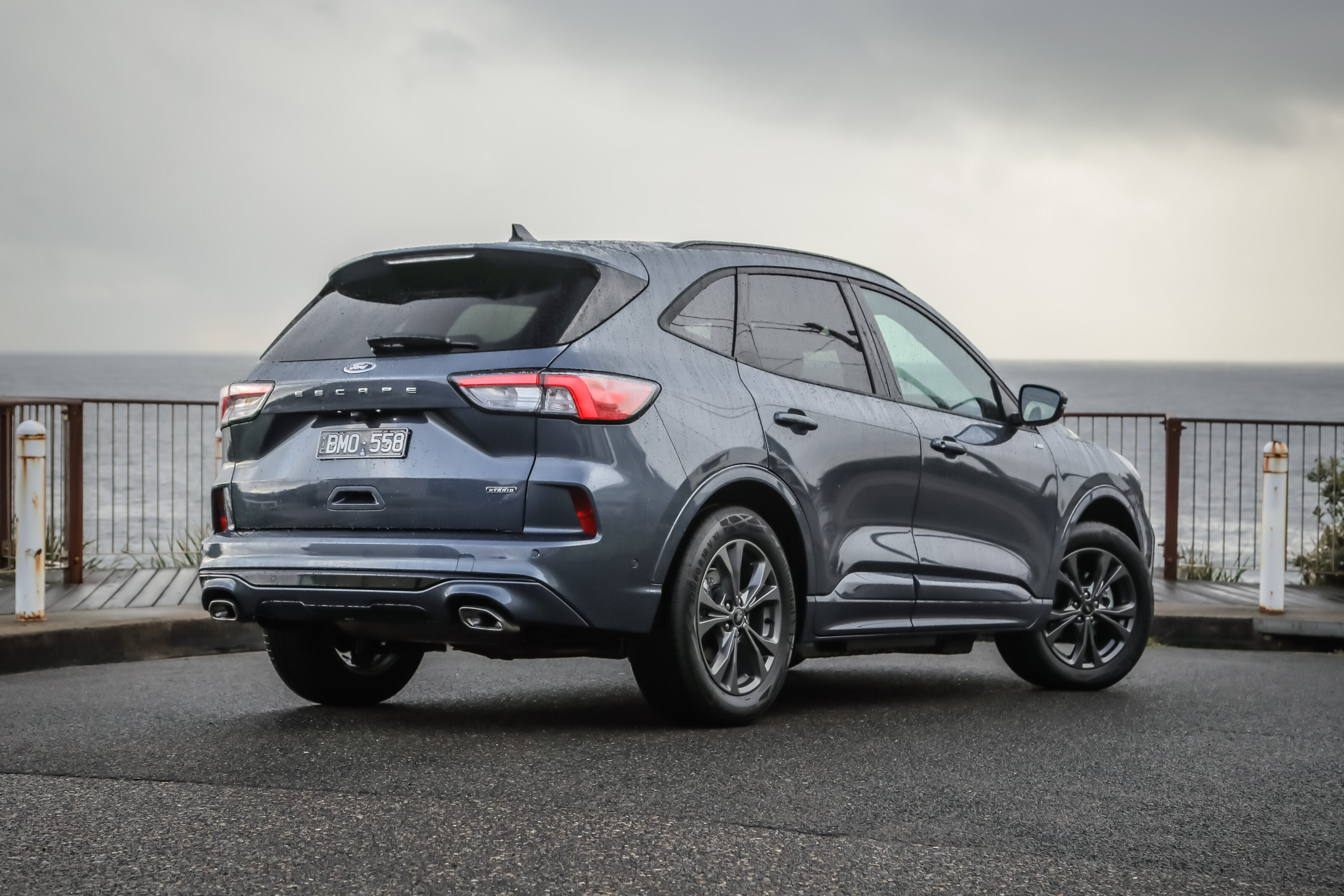
Pricing and Features
Plug-in hybrids traditionally carry a hefty premium owing to their battery packs and electric motors, and Ford’s Escape PHEV is no exception.
The Escape ST-Line FWD PHEV costs $14,950 more than the regular petrol-only ST-Line FWD. It’s priced at $53,440 before on-road costs, or $58,347 drive-away (based on a Sydney postcode).
For perspective, MG charges an extra $12,000 for the PHEV version of the HS and Peugeot asks nearly $20,000 extra for the PHEV version of the 3008 GT Sport.
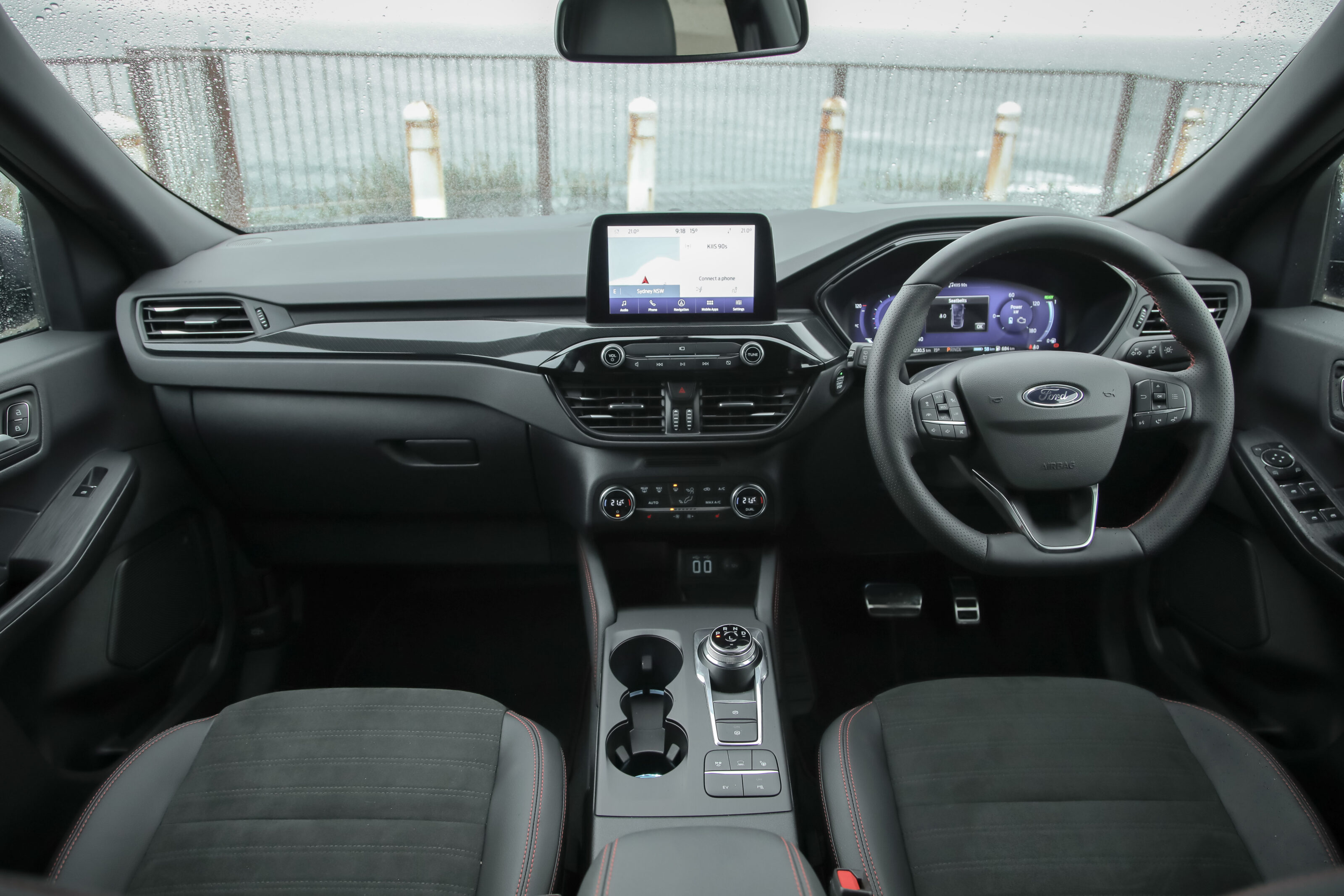
A handful of equipment additions have been added to the PHEV over the regular ST-Line: B&O premium audio system, electric driver’s seat adjustment, rear centre armrest and a fabric/artificial leather upholstery combination instead of cloth seats.
Other key standard features include 18-inch alloy wheels, keyless entry with push-button start, dual-zone climate control, dual digital cabin displays, embedded Ford Pass modem, wireless phone charging, adaptive cruise control, traffic sign notification, blind-spot monitoring, attention monitor, and parking sensors at both ends.
While the PHEV variant might be expected to be the technological leader in the line-up, it misses out on the head-up display, advanced LED headlights and auto tailgate included on the Vignale that’s priced lower, from $46,590 before on-road costs.
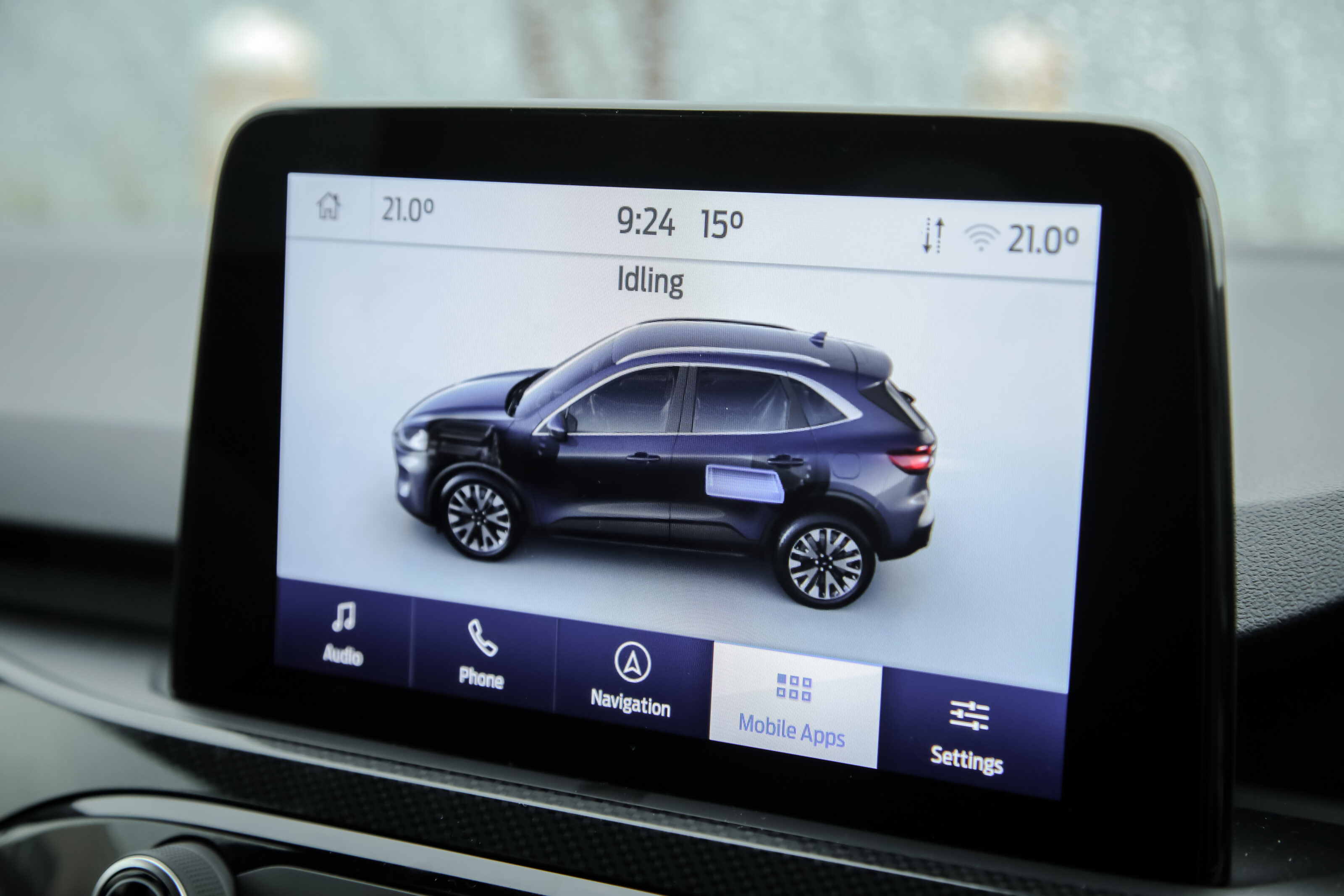
The Vignale also comes with a panoramic sunroof and bigger 19-inch wheels.
A $1950 ST-Line Option Pack can add the HUD, LED headlights and electric tailgate, plus heated front seats.
A Parking Pack, costing $1500, adds semi-auto parking capability, front camera, and (Skoda-like) door-edge guards.

Comfort and Space
While Ford’s smallest SUV, the Puma, can be an effective family car, the mid-sized Escape is a significant step up in both cabin and boot space.
There’s extra versatility, too, with a sliding (60:40 split) second-row bench that allows owners to balance rear legroom and luggage capacity.
With the bench forward, there’s still generous room for knees and good headroom. The backrest angle is also adjustable in the same 60:40 arrangement. Rear air-con vents are standard.
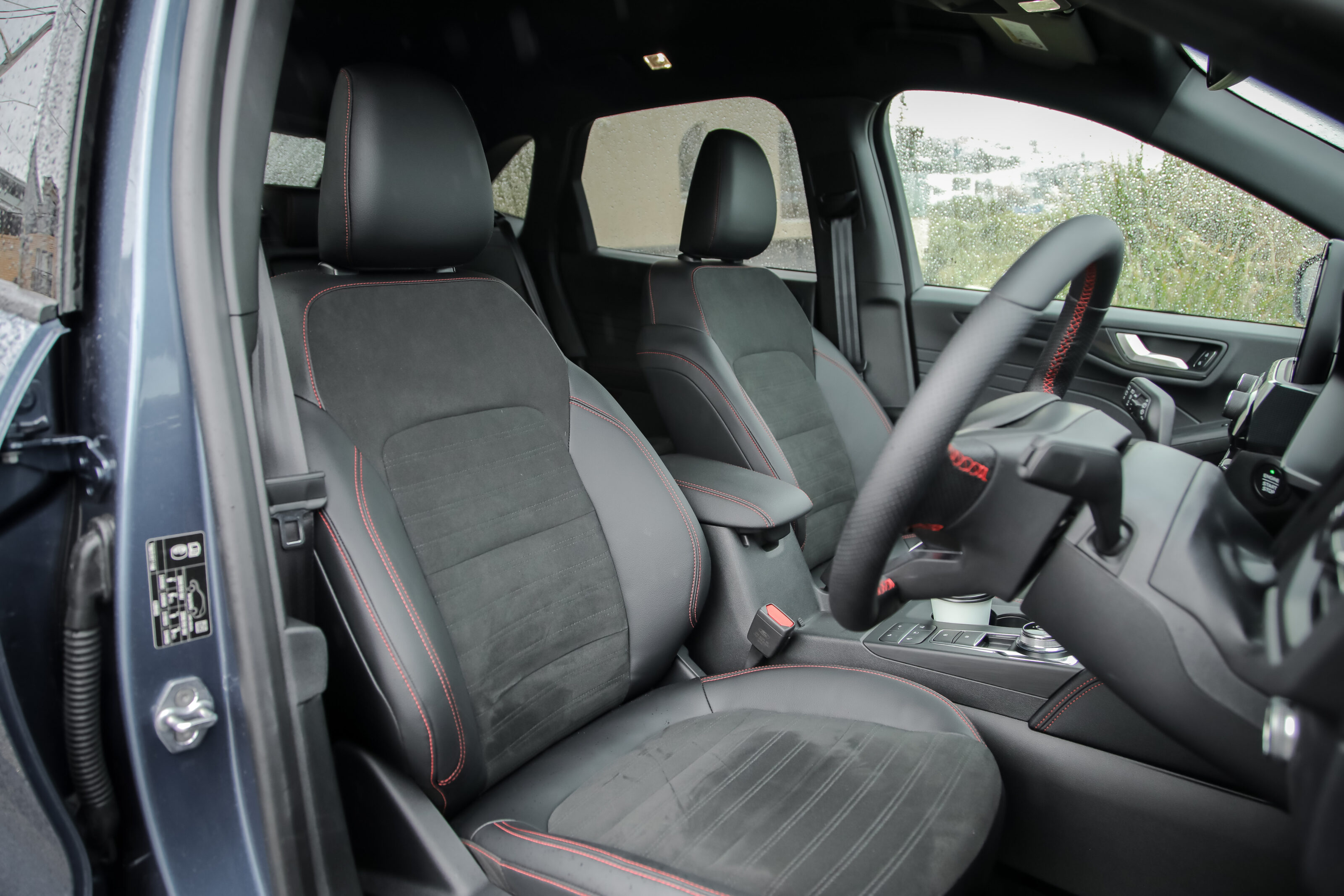
Some passengers may just find the bench’s relatively short cushion doesn’t provide as much under-thigh support as ideal.
On a more granular practicality level, storage options are plentiful throughout the cabin. Door compartments up front include moulded sections for a small bottle, large bottle, and assorted smaller items such as a wallet.
A tall/deep cubby kicks off a centre console that features three cup holders (including middle ‘piccolo’ holder) and three trays, one of which will charge your smartphone. Next to this tray are 12V and USB-A sockets.
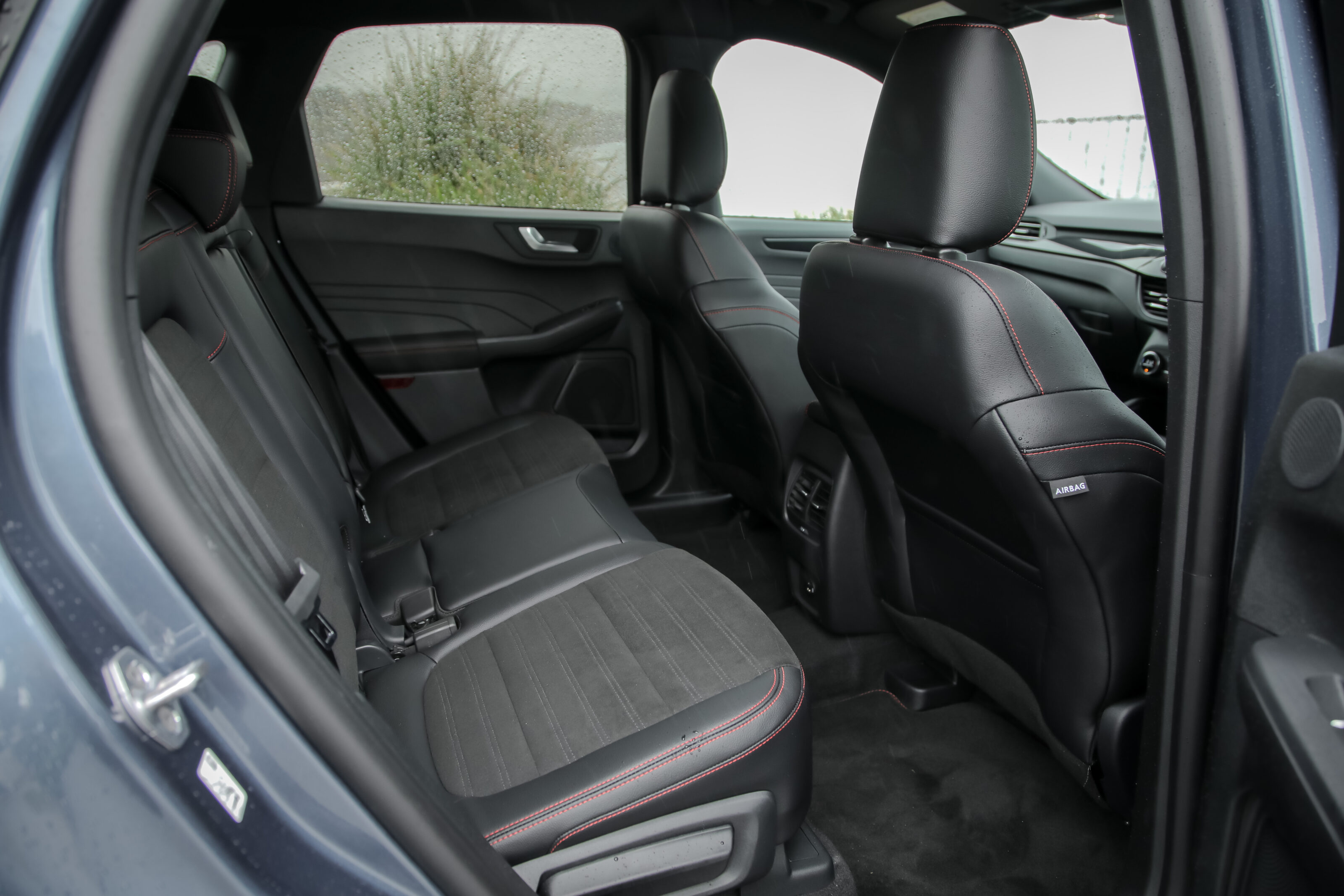
The Escape’s glovebox is also larger than average.
Rear passengers get seatback pouches, door storage, and cup holders in the pull-down centre armrest.
The interior presentation has its good points, including its sporty fabric and fake leather upholstery combination and the chubby, squidgy steering wheel.
Quality doesn’t make a huge leap over the Puma. While soft touchpoints include the upper dash, upper front doors, console cubby and armrests, hard and uninspiring plastics – including the rear doors – are prominent.
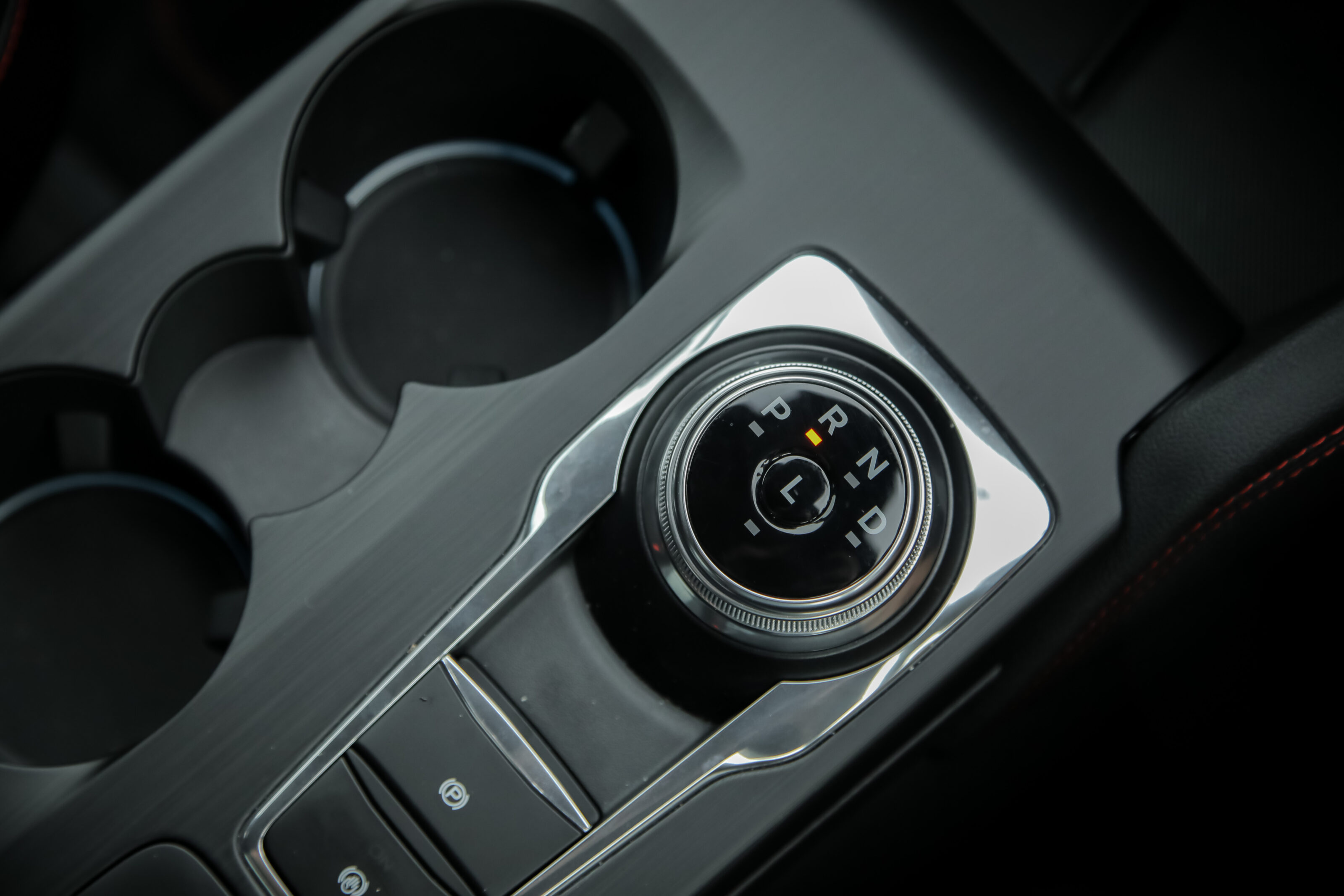
This results in the Escape falling short of plusher-looking cabins found elsewhere in the segment, notably models such as the Mazda CX-5, Peugeot 3008 and Volkswagen Tiguan.
Ford quotes 556 litres for the Escape’s boot when measured up to the roof. It’s not particularly deep but the boot offers plenty of width and length – and a flush loading lip.
Release levers are a big bonus, and they drop the rear seats fully flat to expand boot capacity.
There’s a light, 12V socket and, under the floor, a temporary spare wheel.
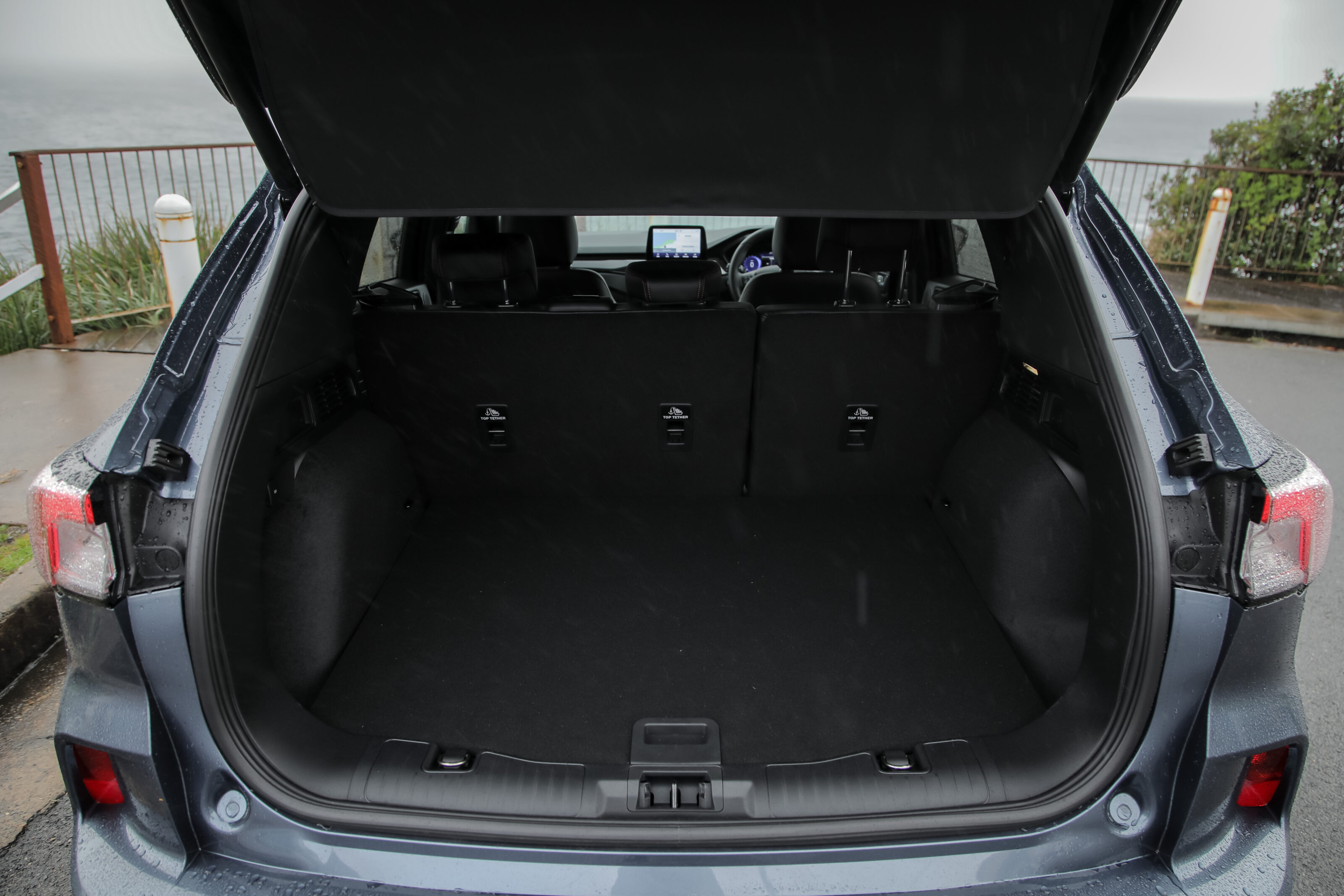
On the Road
The Ford Escape PHEV’s key drawcard is up to 56km of electric driving. That’s realistic, too; we achieved a best of 57km on test.
As with other plug-in hybrids – and unlike regular hybrids such as the Toyota RAV4 Hybrid – higher speeds are possible while using the electric motor only. This includes the freeway limit of 110km/h.
The petrol engine kicks in only to support the driver’s request for urgent acceleration, or when the Escape’s 14.4kWh battery has been depleted to the point where the vehicle then acts as a regular hybrid.
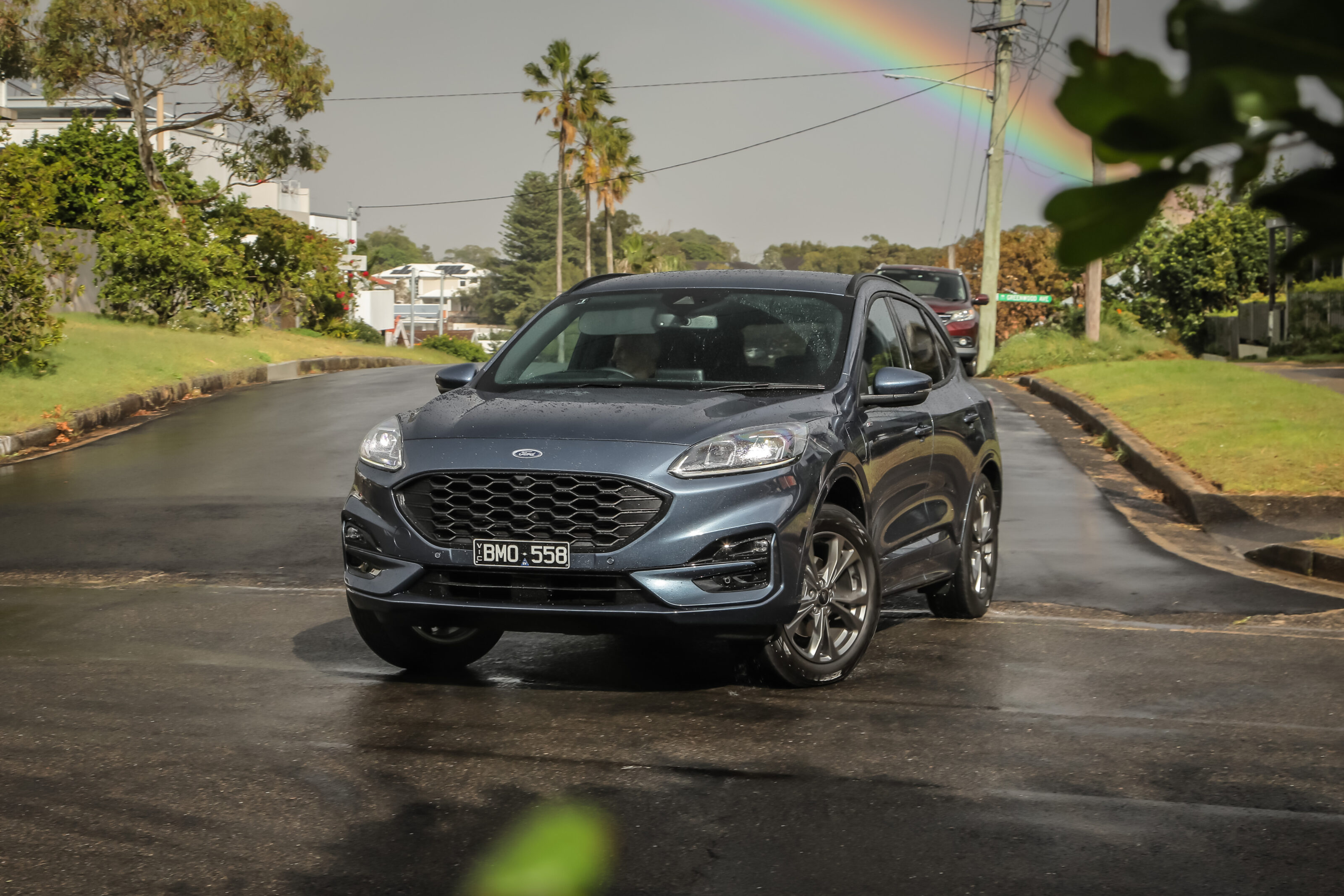
In Hybrid mode, the electric motor will operate at lower speeds but the petrol engine becomes the primary form of propulsion above 40km/h.
Ford’s 2.5-litre four-cylinder uses the same economy-focused Atkinson cycle combustion process as Toyota’s hybrid drivetrains, though it sounds more civilised – even sportier – than the petrol engine in the RAV4, for direct comparison.
We averaged 3.2 litres per 100km during longer testing that included exhaustion of the electric range and dynamic driving. Official fuel consumption is 1.5L/100km, which makes the PHEV vastly more frugal than the 8.6L/100km of petrol Escapes.
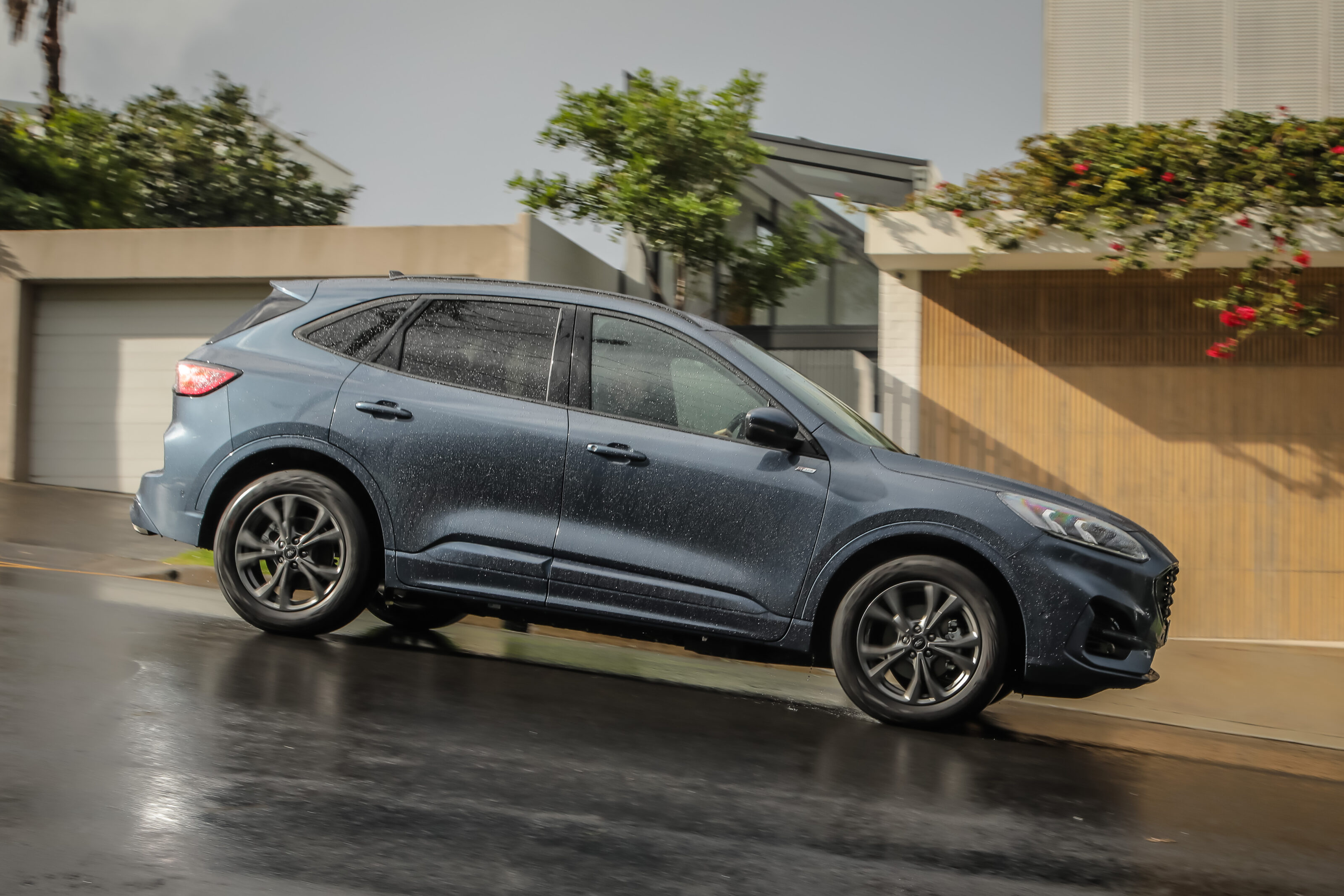
The digital driver display is a variation on the one found in other Escapes, providing information on whether the vehicle is using electric power, recharging via regenerative braking (when lifting off the throttle or actually braking), or acting in Hybrid mode. It also indicates the estimated electric range available.
It’s possible to use no fuel at all, of course, if your daily drives are limited in distance and you’re happy to regularly charge the vehicle.
The Escape PHEV can be fully charged in up to six hours simply using a household socket, or about two hours if owners invest in a 22kW AC wallbox unit.
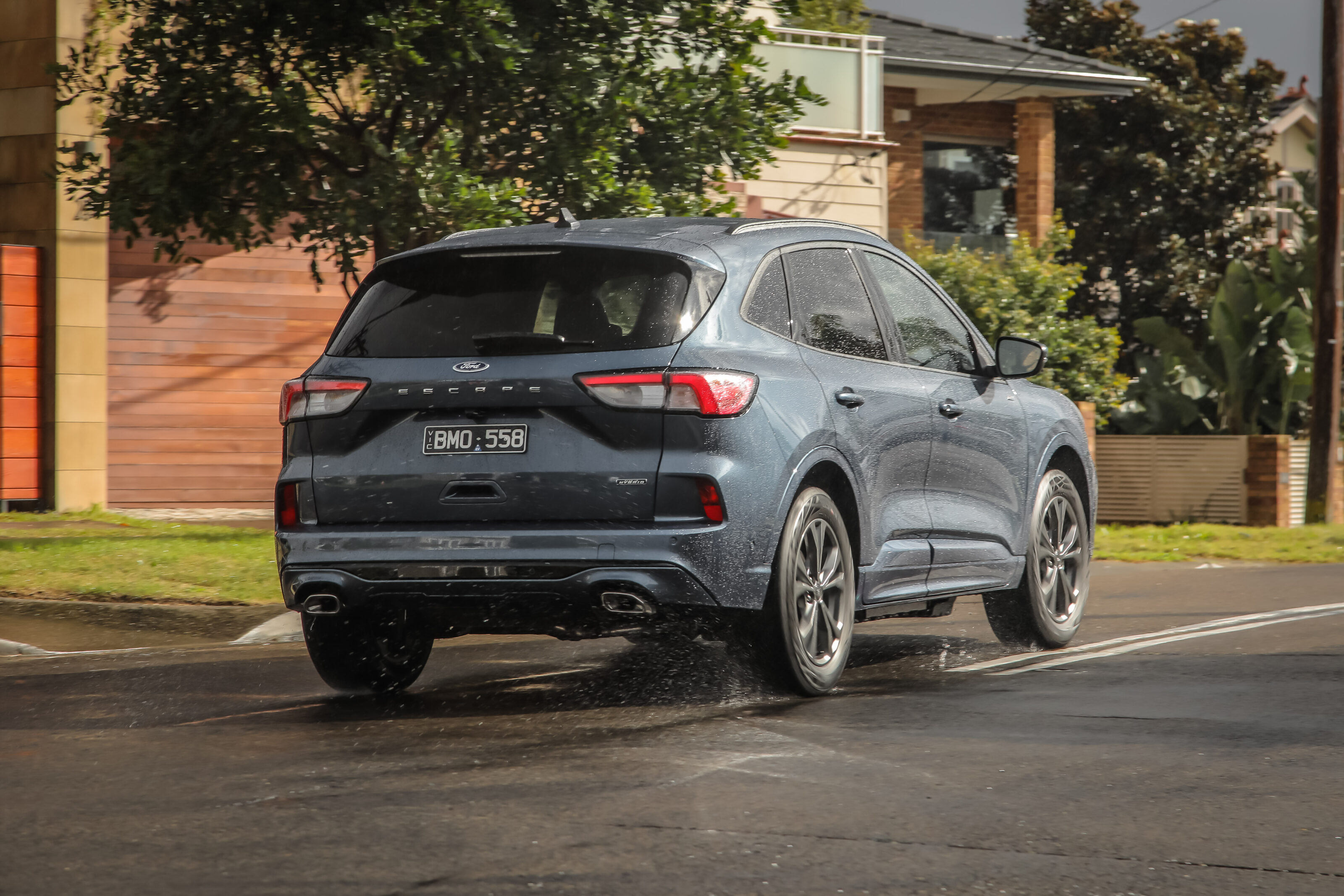
Going for the PHEV brings a couple of advantages over regular Escapes; throttle response is smoother, where the petrol Escape’s accelerator pedal is overly sensitive. And when comparing the two front-wheel-drive models, the PHEV variant is less prone to overwhelming its front wheels – manifested by either torque steer or wheelspin.
However, expect the traction control to cut power if trying to accelerate quickly in the wet.
The Escape PHEV employs an automatic e-CVT (continuously variable transmission) and isn’t as responsive as a fully electric SUV of a similar size. Even when the petrol engine joins the action for maximum performance, the Ford is brisk rather than rapid.
Ford of Europe states the PHEV, which has a combined power output of 167kW, achieves the 0-100km/h run in 9.2 seconds.
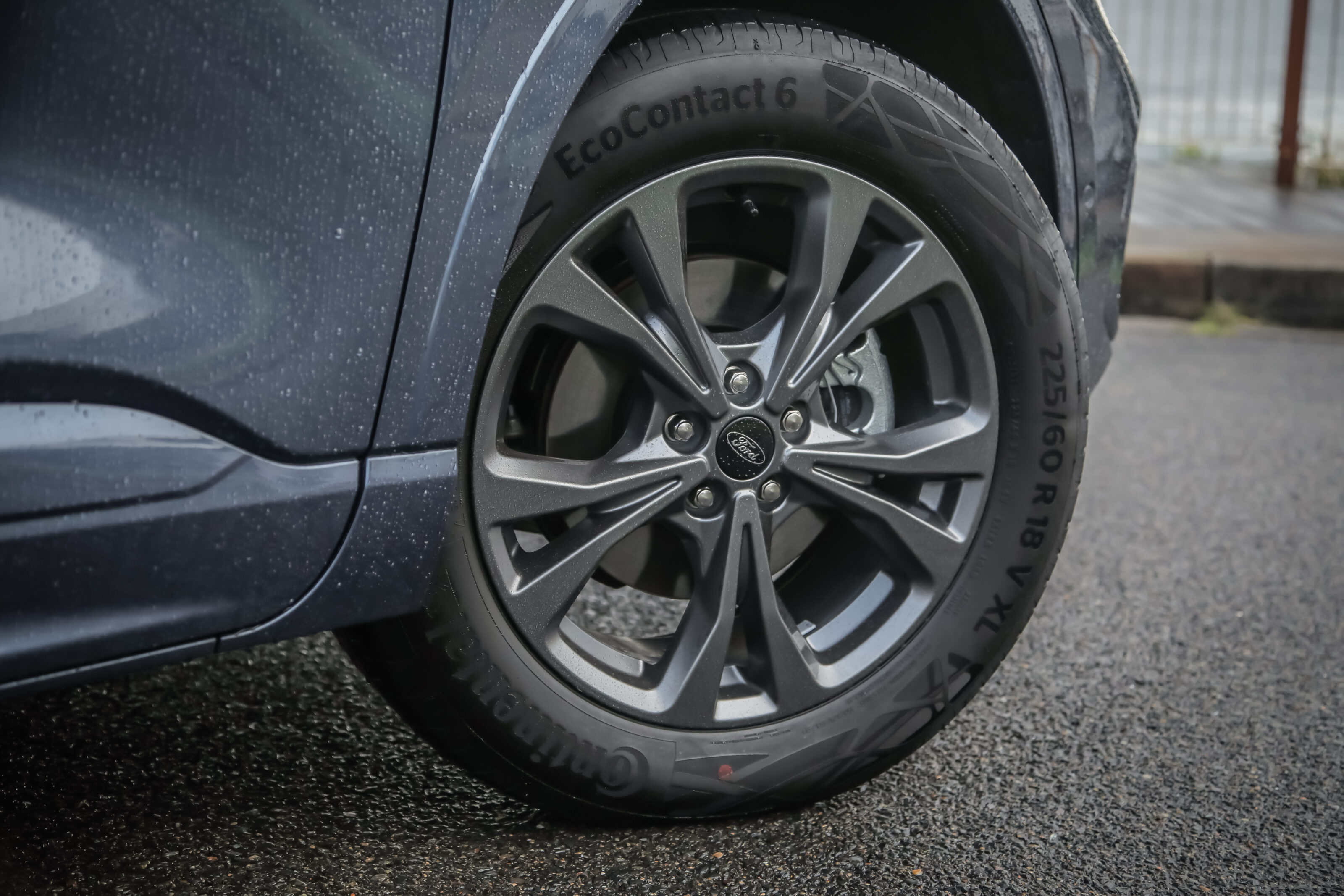
While a figure for the 2.0-litre 183kW/387Nm petrol Escape is unavailable, we’d wager the non-electrified version is significantly quicker. It certainly feels that way from behind the wheel (the petrol Escape is one of the quickest models in its segment).
The direct steering seems more settled around the straight-ahead compared with the turbo Escape, though the PHEV also has issues in the areas of ride and braking.
There’s a generally tense feeling to the Escape’s ‘sports-tuned’ suspension, though it’s the SUV’s tendency to jar over sharper or bigger suburban bumps that can often make the drive uncomfortable.
A rear suspension that made a surprising switch last year from a segment-standard multi-link arrangement to a cheaper torsion beam set-up (for front-drive Escapes only) is particularly culpable. The suspension isn’t helped by a need to support an extra 222kg of electrification componentry in the case of the PHEV Escape.
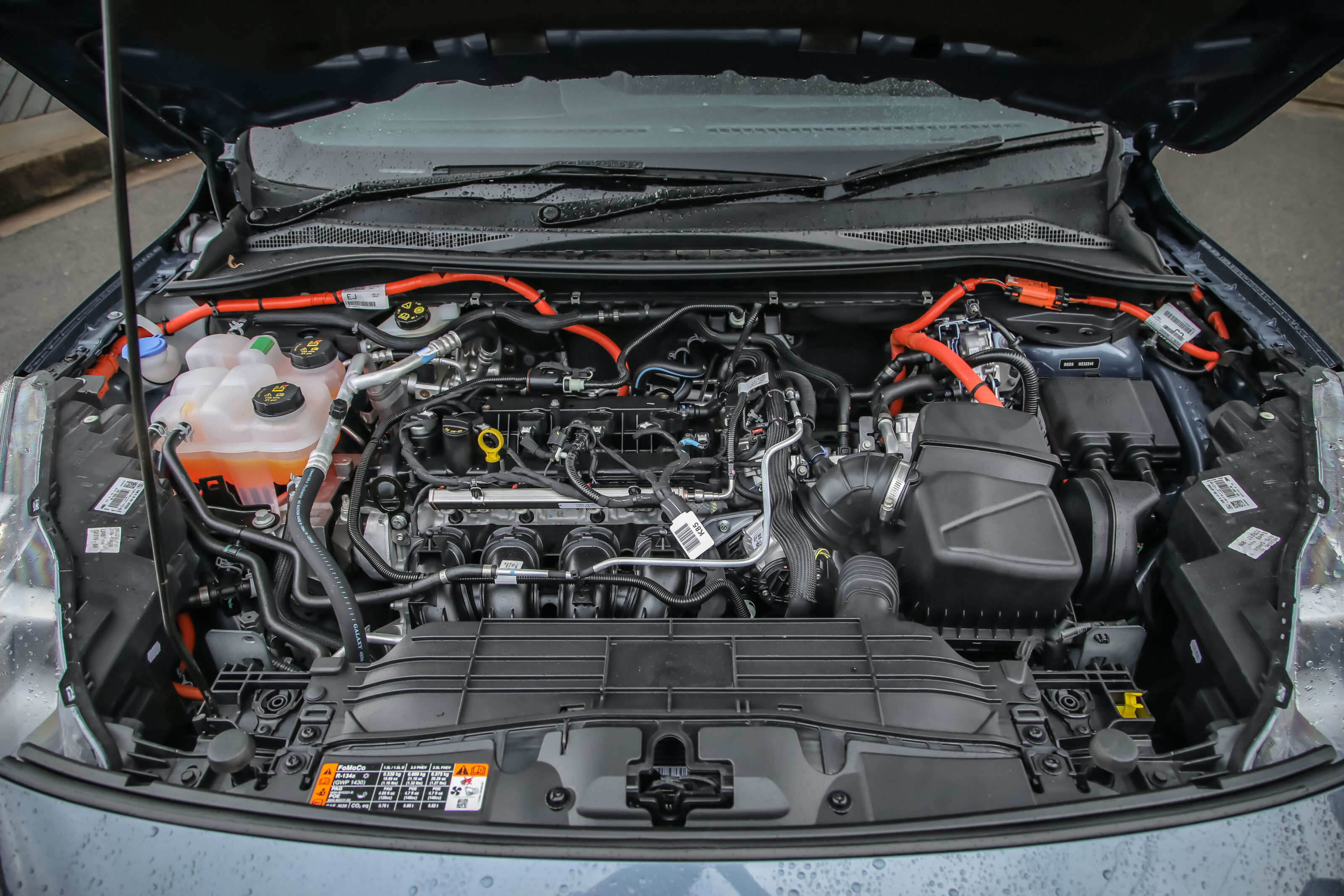
The mediocre ride quality is a shame, as the Escape otherwise lives up to Ford’s reputation for fine-handling vehicles.
Its brakes are also very grabby – becoming more linear beyond the initial press of the pedal – and the Ford lurches to a standstill with a slightly unedifying creak.
The ST-Line seats offer more comfort than the Escape’s suspension and a combination of direct steering and a tight turning circle make Ford’s mid-sized SUV easy to manoeuvre.
Two key points to note for buyers towing or off-road excursions: the PHEV variant has a lower ground clearance than other Escapes and its braked towing capacity is reduced by a third – 1200kg versus 1800kg.
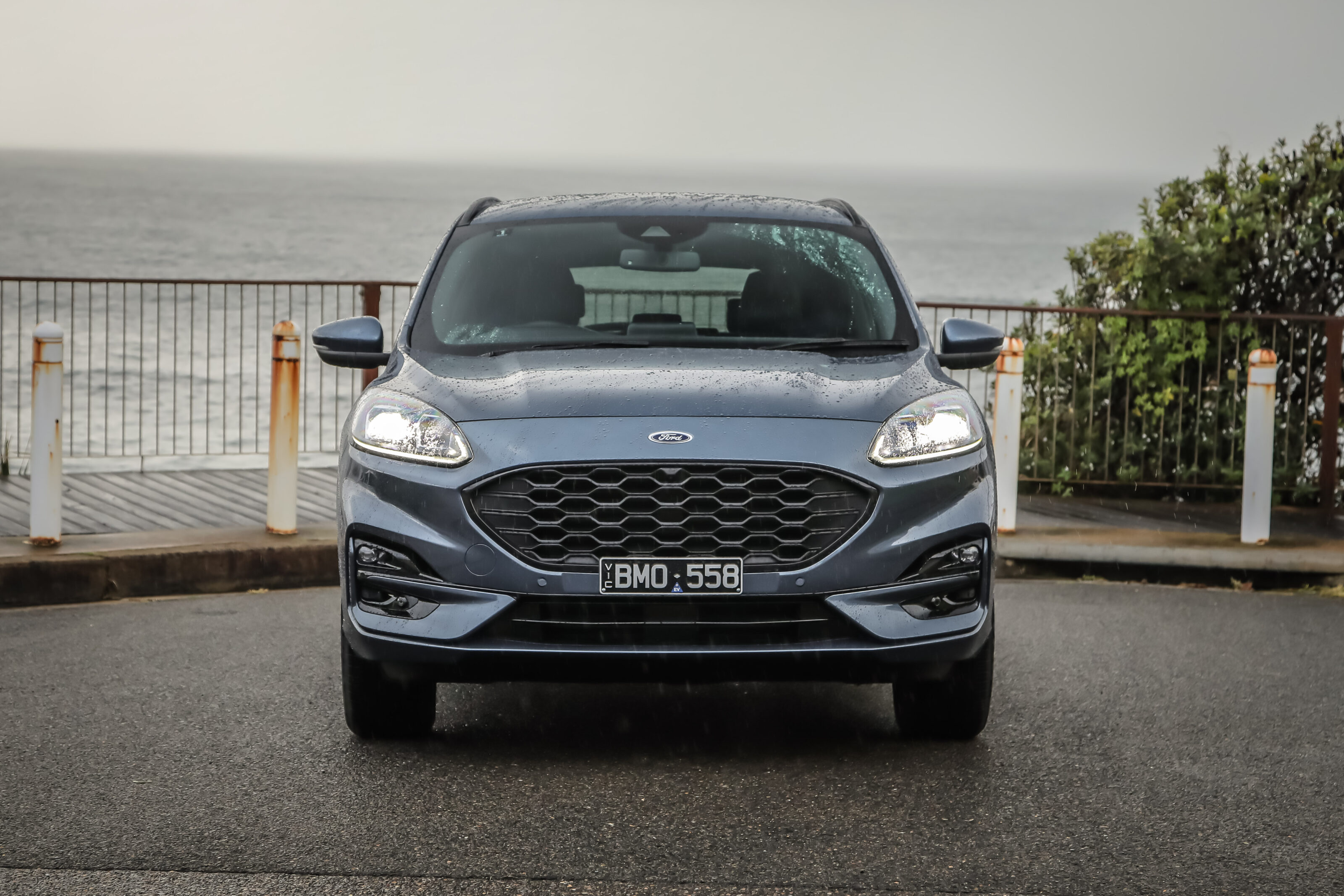
Ownership
Capped-price servicing for the Escape PHEV varies between $315 and $620 annually (or every 15,000km). It’s $1010 over three years or a total of $1945 over five years – all reasonable pricing.
Ford also offers a loan car service while the Escape is booked in for maintenance, and roadside assistance is complimentary for up to seven years provided owners stick to the annual schedule.
Ford Australia backs the Escape with a five-year warranty.
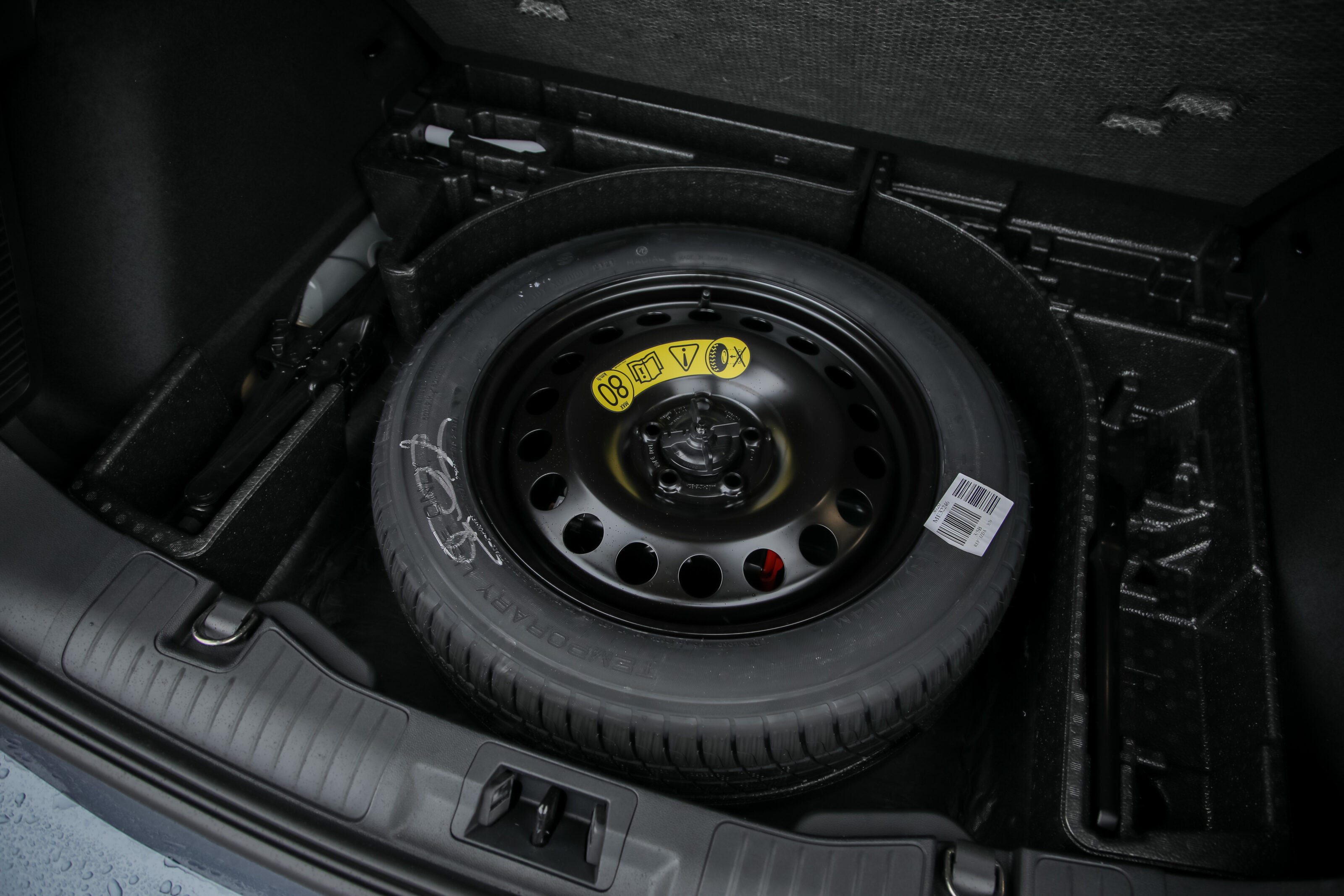
VERDICT
Plug-in hybrids remain a tempting option for buyers looking to achieve lower fuel bills than a regular hybrid and a longer range than a fully electric vehicle can currently provide.
Recouping the Escape PHEV’s high cost of entry will take plenty of time, though – more than 10 years, in fact, based on 10,000km annual mileage and the respective fuel consumption figures of the plug-in and turbo variants.
The PHEV brings a few extra features and some improved driveability over the turbo petrol ST-Line Escape, though braking and ride comfort remain disappointing aspects.

It’s worth checking out the much cheaper and more powerful MG HS Plus EV, or wait to see how Mitsubishi’s upcoming second-generation Outlander PHEV stacks up.
Or, for those willing to forgo the plug-in option (and wait some months for delivery), the flagship RAV4 Edge Hybrid is a strong all-rounder.
2022 Ford Escape ST-Line PHEV specifications
Score breakdown
Things we like
- Smooth performance in electric mode
- Seamless hybrid operation
- Comfortable and versatile interior
- Enjoyable handling
Not so much
- Ride can be uncomfortable
- Grabby brakes
- Slower than regular Escape
- Big premium over equivalent petrol model
We recommend
-
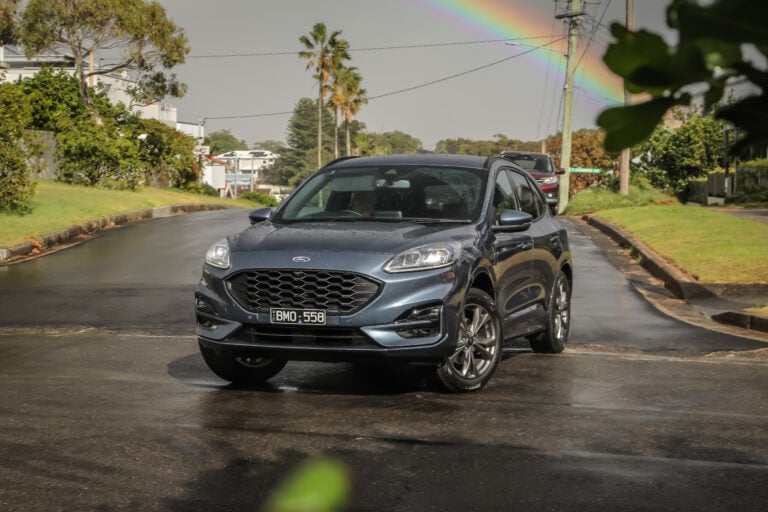 News
News2022 Ford Escape pricing and features: Plug-in hybrid arrives in Australia
Ford’s first electrified vehicle has arrived after a lengthy delay, topping the Escape midsized SUV line-up
-
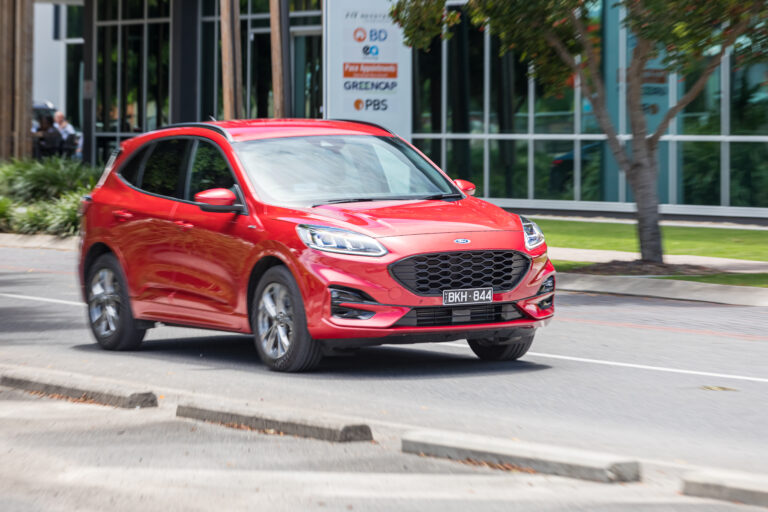 News
News2022 Ford Escape, Transit and Transit Custom pricing increased
MY22 models get a minor price rise
-
 News
NewsNew car calendar 2026: All the new cars coming to Australia next year
Here’s the WhichCar by Wheels guide to all the new cars that will launch in Australia in 2026. Check back in regularly for updates...






